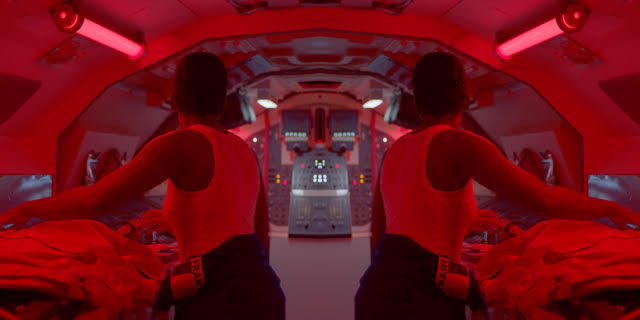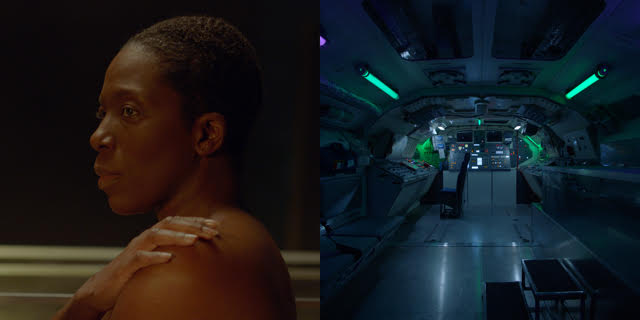By DAVID DUPONT
BG Independent News
I don’t know how many times I viewed Stan Douglas’ 2019 “Doppelgänger.”
At the Friday press preview for the exhibit, we were led into the darkened room. Sat down to watch. The short film has no opening credits and no closing credits.
A red sun rises as the film starts. Mirror images are projected on two screens set side by side. What looks like a bug traverses the sun heading to the edge. The loping strains of Thelonious Monk’s “Misterioso” sound in the background. We meet the astronaut Alice.
The film ends – if we can really say it does – with a question posed to Alice: “What’s the last thing you remember before waking up on the Hermes?” Her answer cuts back to the image of the sun.
This all happens twice, though what occurs between in those two events are strikingly different, one more ominous than the other.

These two 12.5 minute long sequences loop continuously. But I, and at least a couple others, didn’t realize there were only two sequences so we sat there watching them over and over. As scenes repeated themselves my eyes shifted, seeking new details which I took as nuances I’d missed previously. The scenes shift from scene to scene, and clearly in some iterations, are flipped.
I watched mesmerized and uncertain.
Finally getting up and leaving the gallery I felt like I had entered another dimension. “Doppelgänger” had accomplished its mission.
The film installation opened today in the Toledo Museum of Art’s Canaday Gallery and continues until May 15.
Curator Jessica S. Hong said the multiple ambiguities are intended to stretch the viewer’s imagination. “The goal is not to get it so much … it is to get viewers to think more expansively.” That’s true of all great art.
Some questions – like the nature of that object moving across the sun – are answered in a way that prompts more questions.
Nothing resolves.

The doppelgänger of the title, is a clone of Alice. That clone emerges at a point in deep space, a place from which they are never intended to return.
Then something goes awry, and both Alice and the clone return to earth.
Will they be welcomed or viewed with suspicion? All depends on whether a message, beamed to space and back on very thin paper, is read frontwards or backwards.
The film tackles themes of identity and reality. Alice asks of her clone: “Who is she to me then? Family.”
I was convinced this was a quotation from Shakespeare. It is not, but it well could be.
At another point, the mission control director quips that the reason UFO sightings are most common in New Mexico and Arizona is because White people there so frequently encounter indigenous people, and that reminds them that they are settlers and they want to imagine something more alien than themselves.
The film is projected on translucent screens so it can be viewed from either side.
Viewers will be allowed to drift in and out of the gallery, catching the film at a random time, further scrambling any notion of narrative sequence. They’ll be able to walk around the screens, to see different sequences, allowing them to discover and ponder for themselves.Frequently when I return to an exhibit after an initial viewing, I make new discoveries, see the work in a different light. That, I expect, will be especially true for “Doppelgänger.”

